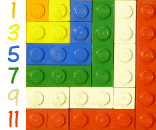Definite Integrals
Integration
| Integration can be used to find areas, volumes, central points and many useful things. But it is often used to find the area under the graph of a function like this: | 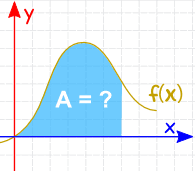 | |
| The area can be found by adding slices that approach zero in width: And there are Rules of Integration that help us get the answer. | 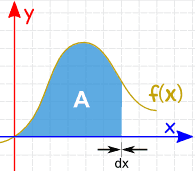 |
Notation
| The symbol for "Integral" is a stylish "S" (for "Sum", the idea of summing slices): |  |
After the Integral Symbol we put the function we want to find the integral of (called the Integrand),
and then finish with dx to mean the slices go in the x direction (and approach zero in width).
Definite Integral
A Definite Integral has start and end values: in other words there is an interval [a, b].
a and b (called limits, bounds or boundaries) are put at the bottom and top of the "S", like this:
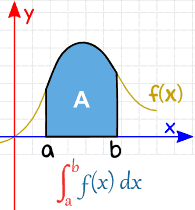 | 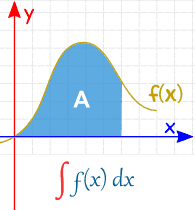 | |
| Definite Integral (from a to b) | Indefinite Integral (no specific values) |

